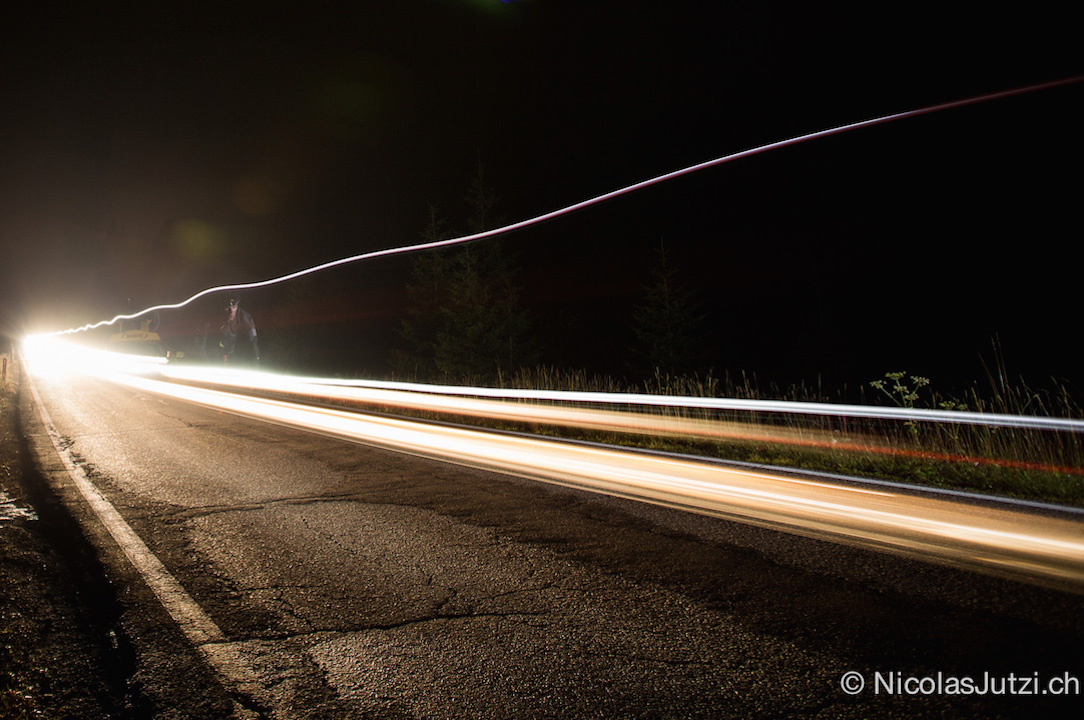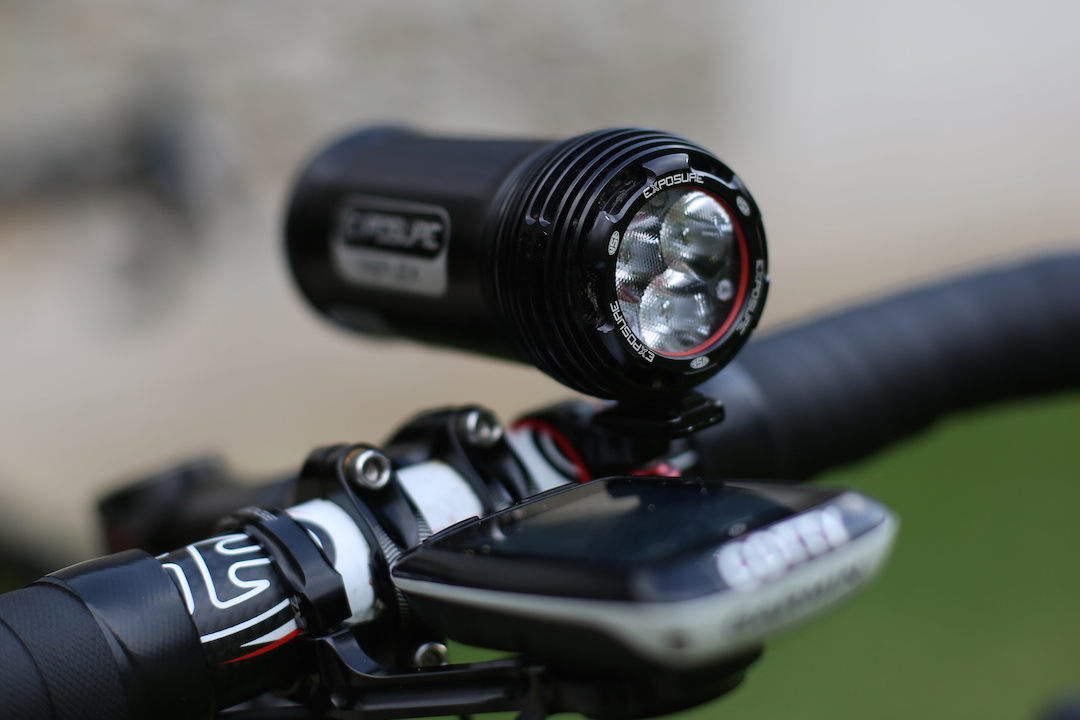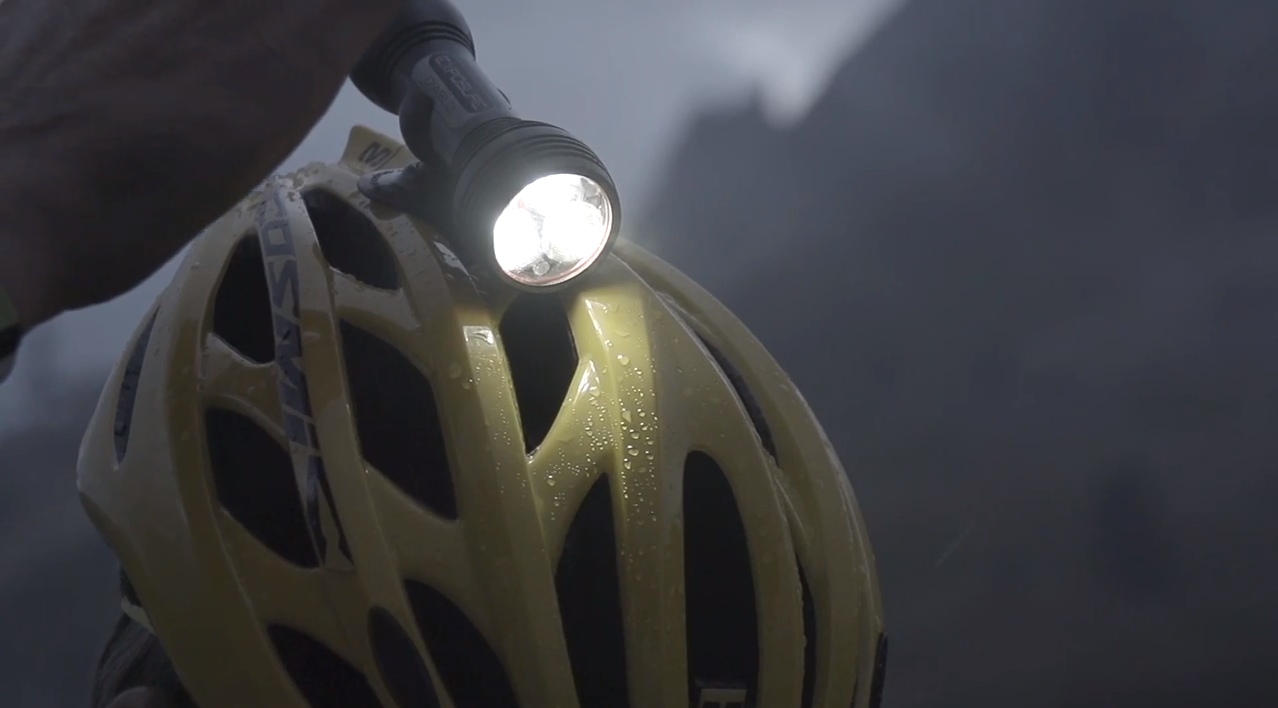Learn
- Cols //
- Cycling Tours //
- Learn //
- Ask the experts //
- Shop

Night rider? Let There Be Light
Be safe and be see. What to look for in a lighting system.

With a constant stream of new products, gadgets and garments to keep us excited about all season long it seems that cycling has it all, and that’s especially true when it comes to lighting. Gone are the days of sticking a couple of batteries in an old torch and heading out into the unknown, but with a little consideration at what you’re hoping to get out of your lights it should be easy to narrow down the options in just a few short steps. The key is to identify your needs, where you’ll be riding, how long you’ll be riding for, will you have ambient light like street lamps to help you or are you going to be in a total black out? Here our partners at Exposure Lights give us a break down of the basics when considering a set of lights.
See or Be Seen
There are two main functions of a front light. The first is to be seen and is generally favoured by commuters traveling in well lit areas when a lower powered light is adequate to identify their presence to other road users. The next function is to clearly see the road ahead and is essential if you’re thinking of really heading into the dark where the only extra light you may get, if you’re lucky, is that from the moon. If you don’t need an abundance of light then look for a lower powered (and also priced) commuter specific light. If you know you’re going to really explore then there are a couple more points to consider when choosing the best light for your needs.
On the rear the only function is to be seen. You really don’t want to take any risks here, especially as you can’t continually keep an eye out for what’s creeping up on you behind. Invest in the best light that your budget will stretch to. 80 Lumens will provide a serious blast to the retinas of oncoming drivers which is exactly what you want. Sometimes it can seem like a lot of money to spend on a rear light but then you have to remind yourself, how much is my life worth?
Lumens and Beam Pattern
In simple terms, Lumens are a measure of the total amount of visible light to the human eye that is emitted from a light, so the higher the Lumen rating the brighter the light will appear and the more you’ll see (in theory). Whilst this is true, you’ll also want the beam pattern to be relevant to what you want to see. Some lights have a precise beam pattern with a flood and spot light to provide the greatest, and best placed, amount of useable light which is excellent when riding on the road.

Burn Time
Naturally the more Lumens, or brighter the light, the shorter the burn time (how long it lasts on a single charge). Once again, choosing the right lighting system for you will start by identifying your exact needs. If you’re only going to be riding for a couple of hours then it’s likely you’ll be able to run the light on full power, however if you’re going to be out for many hours then you’ll need to be a little more considerate of the power setting that you run it on or you may need a second battery. In some instances, as is the case with Exposure’s Reflex Technology, the light will automatically adjust the brightness based on your riding. If you’re going slower uphill then it’ll dip the power whereas if you’re carving your way downhill it’ll intelligently sense that you need full power. Clever stuff indeed and certainly a neat little feature that makes sure you can switch on and forget about everything else but the road ahead.
Charging
Don’t get caught out in the dark. Always keep an eye on the watch and get a good understanding of how long your lights will last at certain power settings. If in doubt, or if you know you’ll be in a place when it may be tricky to regularly get to a mains or USB charging source then consider investing in an additional battery. In most cases this will only be needed in extreme situations so may not be necessary for everyone. To help you keep track of how much power you have left look for lights with a fuel gauge that will quickly tell you if there’s still time to play or if it’s nearly lights out.
A Word From Mike Cotty
Over the years I’ve somehow found myself in many a situation in the mountains when I’ve thought to myself, ‘what on earth am I doing here?’ Whilst it might not be close to the top of your list (actually it may not even be on your list) riding through the entire night in the mountains is one of the most surreal and fulfilling experiences I’ve ever had in my life. In the build up I tested a lot of lights, meticulously analysing Lumens versus burn-times versus weight (I admit, I am a geek) and I was quite amazed at how little power you may actually need which may not be what lighting manufacturers want to hear but, hey, I’d prefer to be honest with my own personal experience. To give you an idea I rode the second night of The Road to Mont Blanc using a Strada MK5 and Joystick MK9 (actually I took the Joystick off as I was having neck ache from 40 hours of continuous riding) which meant I had less than 600 Lumens during some of the deepest, darkest, moments in the heart of the Swiss Alps. Admittedly at that point in the ride I was far from smashing it but still, I hope this gives you an idea of what you really can get away with. A primary consideration that I had during this ride was burn times so I opted to run my lighting on a mid-setting to conserve power.
Video
Mike takes a brief look at Exposure’s new technology. Click the image below to watch the video.

Words by John Cookson at Exposure Lights and Mike Cotty
For more help and advice why not ASK THE EXPERTS










